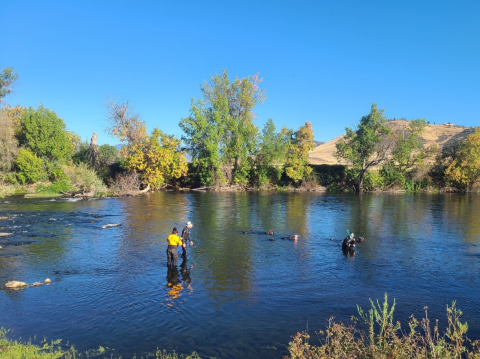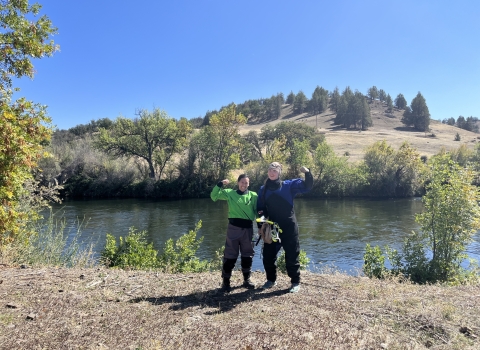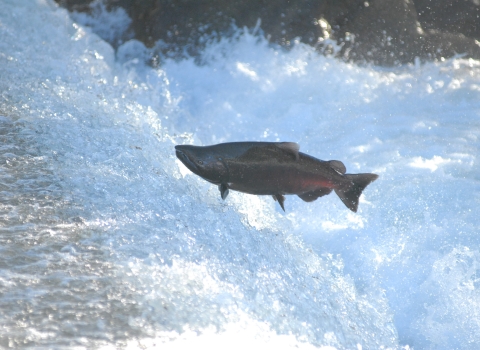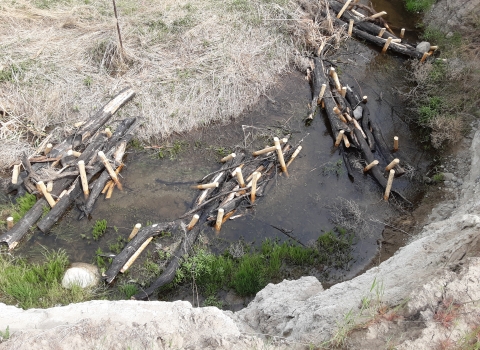By Linnéa Gullikson, Biologist with the U.S. Fish and Wildlife Service’s Washington Fish and Wildlife Office in Lacey, Washington
In my work as a biologist, I have come to love an unsung hero of the riverbed, freshwater mussels. Mussels are incredibly important to river ecosystems, filtering the water to keep it clean and supporting biodiversity. Some species of mussels can even live up to a century.
A Different Kind of Charisma
However, perhaps because of their unassuming appearance, looking like rocks and blending into their surroundings, they haven’t received the same empathy and conservation focus that more typically charismatic species receive. Freshwater mussels have long been written off by many as insignificant, almost lifeless, which couldn’t be further from the truth.
I’ve seen it click for people – the moment when freshwater mussels come alive to them – and it usually comes when they learn how clever and complex freshwater mussel reproduction is. Since most freshwater mussels rely on host animals like fish or salamanders to reproduce, many species have developed innovative ways to make sure that their tiny parasitic baby mussels can quickly attach to a host.
Some mussel species have intricate lures that mimic a minnow or crayfish to draw in hungry host fish. Others use their shells to clamp down on the host species’ head in order to shoot clouds of baby mussels called glochidia into the fish’s face.
When people hear these stories, they begin to see mussels in a different way, as agents who actively shape river ecosystems and as complex beings whose lives are important.
An Uncertain Future
The joy I’ve experienced learning about freshwater mussels coexists with the reality that some freshwater mussel species across the globe are facing significant pressures. Many threats have pushed some of these species to the brink, and some populations have experienced local mortality events. No one yet knows exactly why. Freshwater mussels generally are now considered one of the most imperiled groups of species in the country.
Because of these declines, the U.S. Fish & Wildlife Service has been working on a species status assessment for the western ridged mussel, which is found in five western states and British Columbia, to help determine whether this species should be listed under the Endangered Species Act.
Operation: Mussel Rescue
Last fall, the largest dam removal project in history began on the Klamath River in California with the goal of removing four dams and restoring connectivity. The dam removal project was a historic moment for ecosystem restoration and came from decades of advocacy from a collective of Tribes from the Klamath River basin. Though it was a landmark win for restoration, we knew that the initial release of massive sediment loads from behind the dams would smother a western ridged mussel population downstream under a thick layer of sediment.
To help the western ridged mussels avoid the sediment impacts, Christie Nichols, a biologist involved in the ongoing species status assessment, spearheaded a project to relocate thousands of mussels out of the sediment pathway. The mussels were translocated to a location further downstream that was out of the main sediment impact area and that had existing mussel beds.
I traveled to a remote location on the Klamath River to join up with colleagues and partners from across the mussel’s range. We all donned our leaky drysuits and snorkeled together in a line, gathering western ridged mussels as we swam upstream. The mussels were hard to spot, tucked in dark crevices next to rocks and buried in the sand, so we quickly learned to feel for them with our hands.
When I found my first western ridged mussel, the first one I had ever seen in person, I felt a rush of awe. I had read about, written about, analyzed, and discussed this mussel every day for almost two years, and now I had one in my hand, surprisingly heavy and wriggling from the shock of being uprooted. The species had felt somewhat distant and hypothetical before, only experienced through documents and pictures.
Now they felt solid and real in a new way. I was struck by how special they are, by the beauty of their quiet, precarious lives tucked among the rocks of the riverbed. In the same moment, I felt a deep sense of loss for these irreplaceable beings and fear for their future. But as I looked around at the people snorkeling beside me in the river, I was also filled with hope. They had all showed up and endured cold days in the river to fight together for this mussel’s survival.
It’s a difficult time to be a freshwater mussel biologist, and the future for freshwater mussels can sometimes feel bleak. When I need hope, I often think of that day in the Klamath, all of us in the river side by side gathering up western ridged mussels. It helps to remember that there are a lot of people who care. Since the translocation in the Klamath, many Tribes, agencies, and non-governmental organizations from across the region have come together to collaborate on creating a proactive conservation strategy to recover all native freshwater mussel species in the western U.S. By working together as a community, I have hope that freshwater mussels will have a brighter future.








